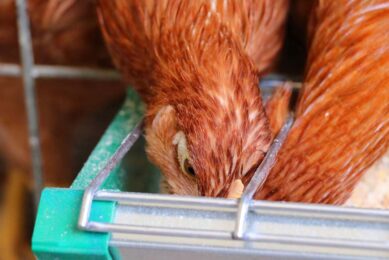Environmental footprint of the egg industry revealed

Spanish scientists have unveiled the environmental costs of egg production on a typical farm in the country, where 93% of laying hens are still caged compared to the much lower EU average of 40%.
Spain is one of the largest egg producers in the European Union, with 1,260 farms and an average of 67,000 birds per unit. Together with neighbouring France, the country represents about 25% of the 7 million tons of egg produced each year in the EU.
Effect of intensive livestock production
The researchers, from the University of Oviedo, wanted to look at the environmental impact of the Spanish egg industry, which generates negatives effects in nature, such as greenhouse gas emissions and soil and water contamination.
They undertook the research, saying that few studies had focused on the impact of laying hen farms on ecosystems despite increasing concerns of the effects of intensive livestock production.
Research model: Farm with 55,000 laying hens
The research team took as a model an intensive poultry farm located in Asturias, which has 55,000 laying hens and an annual production of 13m eggs.
Environmental categories analysed
They analysed the effect of intensive egg production on 18 environmental categories, including:
- ozone depletion
- climate change
- terrestrial acidification
- human toxicity and
- land occupation
Feed production – showed greatest impact
The analysis, published in the Journal of Cleaner Production, showed the greatest impacts in 16 of the analysed categories were derived from the production of the feed supplied to the laying hens.
Amanda Laca, a researcher at the Department of Chemical Engineering and Environmental Technology, said: “Then most affected have been the transformation of the natural earth and the water and land toxicity. The choice of the ingredients that constitute the feed is a key factor.”
Replacement of older hens by new layers
Another factor that generates important harmful effects is the replacement of the older hens by new layers.
“An increase in the useful life of the layers would contribute to reduce the derived impacts, although this factor must be treated together with economic and productive aspects,” she said.
Egg packaging
The effects associated with the manufacture of materials used in egg packaging also harmed the environment, she said.
Gas emissions barely contributed
One of the more surprising findings in the report was that emissions of methane, ammonia and nitrous oxide and electricity, water and cleaning products barely contributed to the total impacts generated.
Footprint value per dozen eggs
The scientists obtained a carbon footprint per dozen eggs of 2.7kg of carbon dioxide equivalent, which was described as “a value similar to other basic foods of animal origin such as milk and much lower than that of veal, pork or lamb.”
While there were a number of negative impacts on the environment, the researcher said “it was important to highlight the beneficial effect that the recycling of waste has on the environment as well as the use of elder chickens as poultry meat for human consumption.”
Join 31,000+ subscribers
Subscribe to our newsletter to stay updated about all the need-to-know content in the poultry sector, three times a week. Beheer
Beheer








 WP Admin
WP Admin  Bewerk bericht
Bewerk bericht